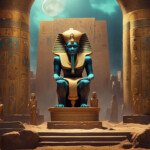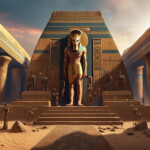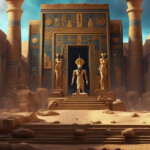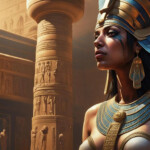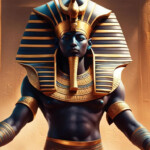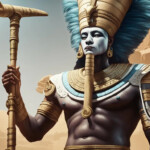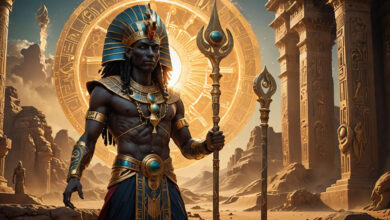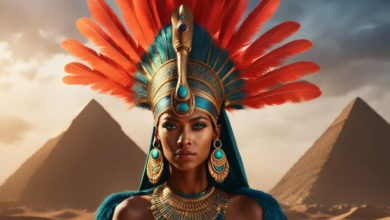Osiris is one of the most significant and revered deities in ancient Egyptian religion, embodying the themes of death, resurrection, and fertility. His story, deeply woven into the fabric of Egyptian culture and religion, plays a central role in the mythology surrounding the afterlife and the moral order of the universe, known as Ma’at.
Osiris was believed to be the eldest son of the Earth god Geb and the sky goddess Nut, making him a pivotal member of the Ennead of Heliopolis, a group of nine deities central to Egyptian myth. His siblings include Isis, Seth, and Nephthys, with Isis being both his sister and wife, a common motif in Egyptian mythology that emphasized the interconnectivity and divine essence of these principal deities.
The myth of Osiris begins with him as the ruler of Egypt, where he is credited with introducing civilization to the people and teaching them agriculture, law, and religious practices. His reign was a golden age of prosperity and harmony, reflecting the ideals of Ma’at. However, this peace was shattered by the jealousy and ambition of his brother Seth, who murdered Osiris in an attempt to usurp the throne. Seth dismembered Osiris’s body and scattered the pieces across Egypt.
Isis, in her grief and love, searched for and reassembled the pieces of her husband, with the assistance of other gods such as Anubis, who is often credited with performing the first act of mummification on Osiris. Through magic and the help of other deities, Isis resurrected Osiris, but he could no longer rule among the living. Instead, he became the lord of the underworld, the Duat, and judge of the dead. In this role, Osiris became synonymous with the hope of resurrection and eternal life for the souls of the deceased, promising them a place in the afterlife provided they lived in accordance with Ma’at.

Osiris is usually depicted as a mummified king, holding the crook and flail, symbols of royalty and fertility, and wearing the Atef crown, a tall white headdress with ostrich feathers on either side. His skin is often green or black, representing both rebirth and the fertile Nile floodplain.
The cult of Osiris was widespread in Egypt, with the Osirian mysteries, particularly the rites of his death and resurrection, being celebrated in ceremonies that affirmed the belief in life after death and the possibility of rebirth. These mysteries paralleled the agricultural cycle, linking Osiris’s resurrection with the annual flooding of the Nile and the growth of crops, symbolizing the renewal of life.
Osiris’s legacy extends beyond the borders of Egypt, influencing the religious beliefs of other cultures and continuing to be a subject of fascination in modern times. His story embodies the quintessential themes of death and rebirth, serving as a testament to the ancient Egyptians’ profound understanding of the natural world and their deep-seated belief in the moral order of the universe and the afterlife.


